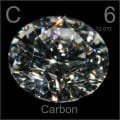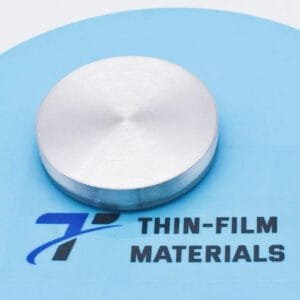Molybdenum Carbide Sputtering Target Description
Molybdenum Carbide sputtering target from TFM is a high-quality carbide ceramic material with the chemical formula Mo2C. This material is widely used in various applications, including thin film deposition and coating technologies, due to its excellent hardness, thermal stability, and resistance to wear and corrosion.

Molybdenum is a chemical element named after the Greek word ‘molybdos,’ meaning lead. It was first noted in 1778 by W. Scheele, and its isolation was later achieved by J. Hjelm. Represented by the symbol “Mo,” molybdenum has an atomic number of 42. It is located in Period 5, Group 6 of the periodic table, within the d-block. The relative atomic mass of molybdenum is 95.94(2) Dalton, with the value in brackets indicating the measurement uncertainty.
Related Product: Molybdenum Sputtering Target

Carbon is a chemical element that originated from the Latin ‘carbo’, meaning charcoal. It was early used in 3750 BC and discovered by Egyptians and Sumerians. “C” is the canonical chemical symbol of carbon. Its atomic number in the periodic table of elements is 6 with a location at Period 2 and Group 14, belonging to the p-block. The relative atomic mass of carbon is 12.0107(8) Dalton, the number in the brackets indicating the uncertainty.
Molybdenum Carbide Sputtering Target Specification
| Compound Formula | Mo2C |
| Molecular Weight | 203.89 |
| Appearance | Gray |
| Melting Point | 2690 °C |
| Boiling Point | N/A |
| Density | 9.18 g/cm3 |
Molybdenum Carbide Sputtering Target Application
The molybdenum carbide sputtering target is versatile and widely used in several advanced applications:
- Thin Film Deposition: Ideal for producing high-performance coatings.
- Decoration: Used for decorative coatings that are both durable and aesthetically pleasing.
- Semiconductors: Essential in semiconductor device fabrication for its excellent electrical and thermal properties.
- Display and LED Devices: Enhances the performance and longevity of display screens and LED lighting.
- Photovoltaic Devices: Improves efficiency in solar cells.
- Functional Coatings: Applied in various industries for protective and functional layers.
- Optical Information Storage: Used in the optical data storage industry, ensuring data integrity and protection.
- Glass Coating: Provides protective coatings for automotive and architectural glass.
- Optical Communication: Utilized in the coating of components for optical communication systems.
Molybdenum Carbide Sputtering Target Packaging
Our molybdenum carbide sputtering targets are meticulously tagged and labeled externally to guarantee efficient identification and quality control. We take exceptional care in handling and packaging these targets to prevent any damage during storage or transportation, ensuring that they reach you in perfect condition.
Get Contact
TFM offers Molybdenum Carbide Sputtering Targets in various forms, purities, sizes, and prices. We specialize in high-purity thin film deposition materials with optimal density and minimal grain sizes, which are ideal for semiconductor, CVD, and PVD applications in display and optics. Contact Us for current pricing on sputtering targets and other deposition materials that are not listed.





Reviews
There are no reviews yet.